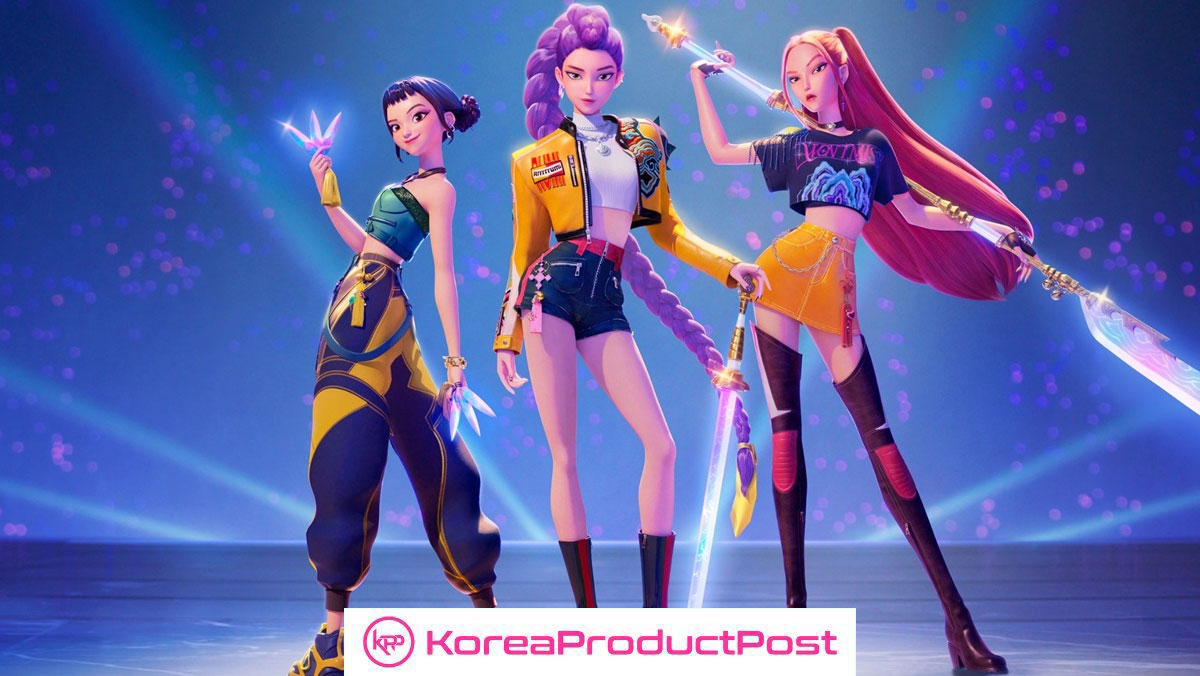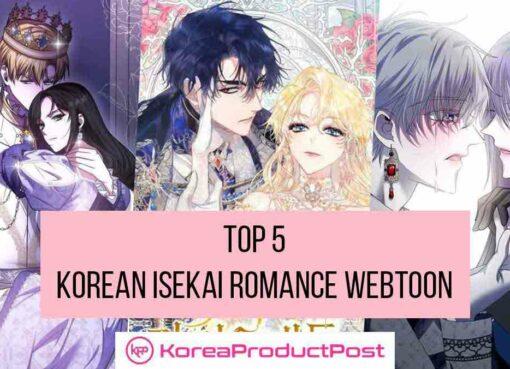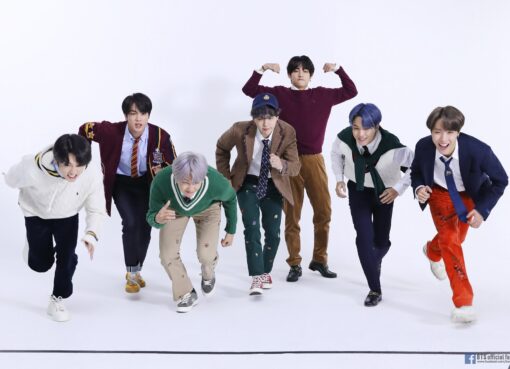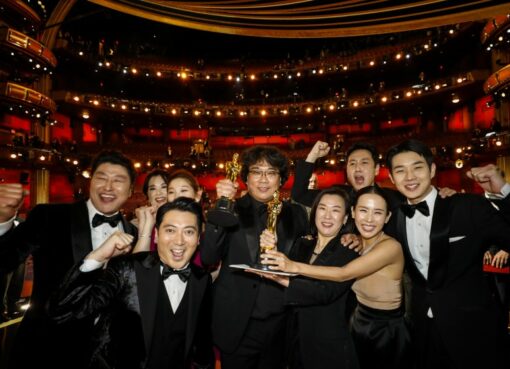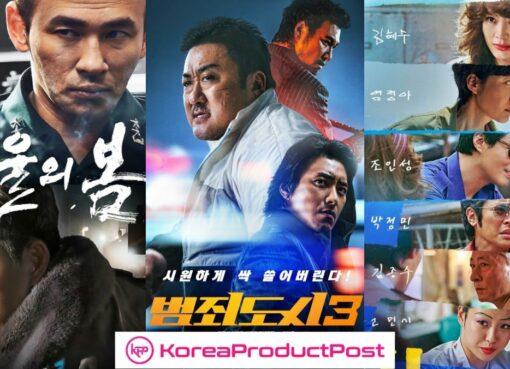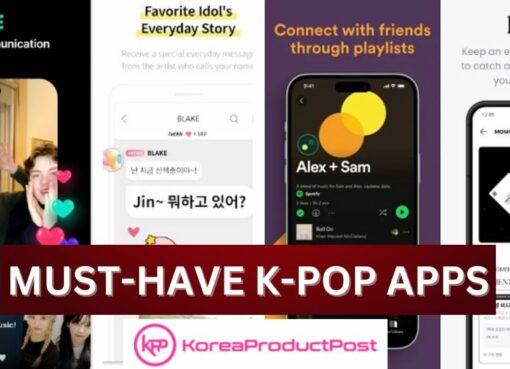If you walked out of “KPop Demon Hunters” thinking, “I need Rumi’s sword and those other HUNTRIX weapons on my merch shelf,” you’re not alone. Worldwide fans have been replaying the weapon scenes, not just for the fights—but also for the cultural depth behind every blade swing. Because, if you noticed, something’s different about the way HUNTRIX fights. They are beautifully choreographed yet spiritually charged. And there’s also a reason why Korean audiences instantly recognized what many international fans missed: these HUNTRIX weapons are way beyond just ordinary props—they hold deeper meaning as heirlooms of heritage, power, and ritual.
So, what do these legendary weapons really mean? And will Netflix eventually give fans the chance to own them, ever?
HUNTRIX Weapons Are More Than Just Props: They Hold Deeper Meaning
You’ve probably seen fan theories about Rumi’s glowing sword or Mira’s curved polearm, but few dig into why these weapons exist the way they do. Every blade, curve, engraving—even the tassels—carry the weight of Korean spiritual history.
Indeed, that’s what sets “KPop Demon Hunters” apart: it doesn’t just borrow Korean aesthetics; it also restores them in bold, stylized animation.
Now, here’s the truth: the weapons are actually based on real Korean ceremonial and shamanic tools, traditionally used to ward off evil spirits. They were created to reimagine and bring ancestral memory into a modern narrative. And if you know how to read them, they will tell you stories of protection, grief, identity, and power.
Let’s break them down.
Rumi’s Saingeom (Four Tigers Sword / 사인검): The Evil-Slayer Born of Time
Firstly, Rumi’s iconic pink-glowing sword isn’t just cinematic flair—it’s modeled after the saingeom, a ritual sword used in Korean shamanism (Muism) to banish demons and cleanse spiritual spaces. What makes it even more mythical? The real saingeom is said to be forged during the Hour, Day, Month, and Year of the Tiger—aligning it with the ultimate guardian in Korean folklore.

In the film, you see dancheong patterns on Rumi’s blade—those intricate temple-like motifs—and constellation engravings that reference the 28 Eastern zodiac signs. These weren’t randomly chosen. In Korean cosmology, those star maps are believed to guide one’s fate. It’s Rumi’s soul map, in steel form.
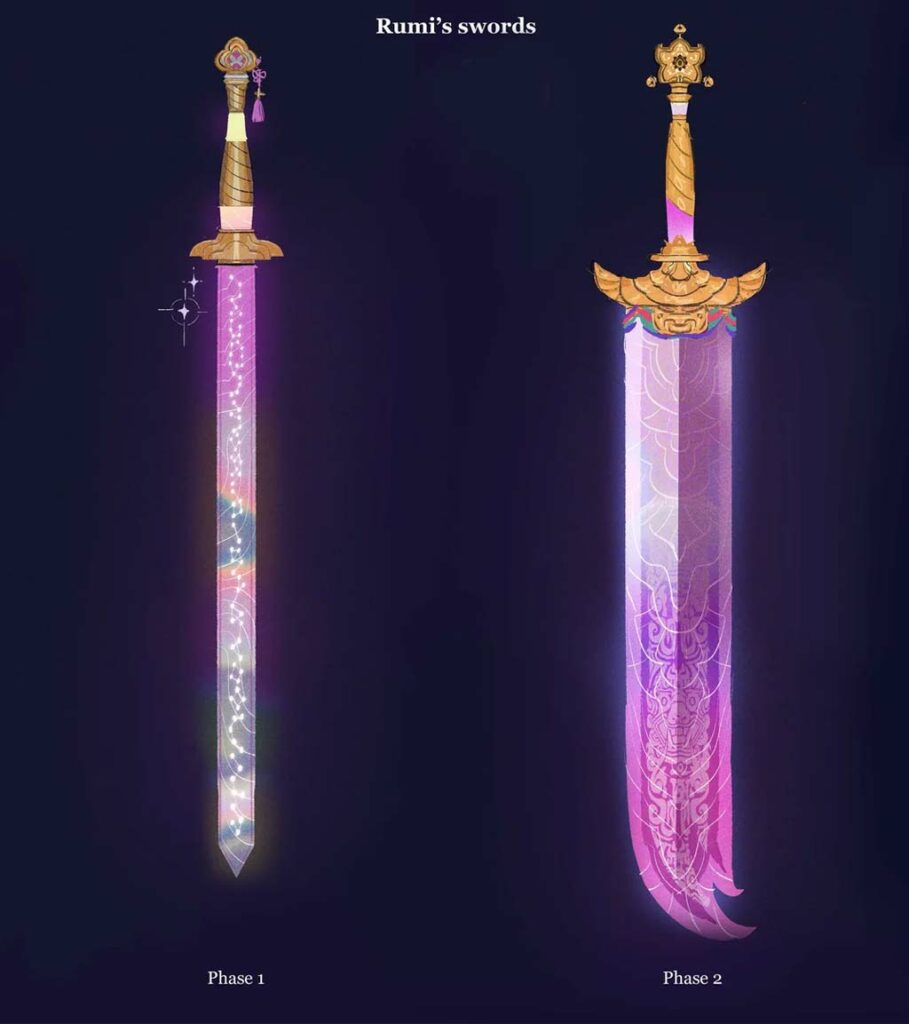
Fans noticed that after Jinu’s death, her sword’s engravings subtly shift. New floral motifs appear—possibly referencing mourning, memory, and resilience. One Redditor speculated it symbolizes Rumi carrying Jinu’s spirit. That’s the level of detail baked into her weapon design.
Zoey’s Sinkal (Spirit Blades / 신칼): Precision as Protection
Zoey’s dual throwing knives might look anime-inspired, but they actually draw directly from sinkal, ceremonial blades used by Korean shamans during gut rituals. Their purpose? Not combat in the traditional sense—but spiritual precision. That’s right. They’re designed to cut through energetic blockages and demonic forces during trance-like dance rituals.
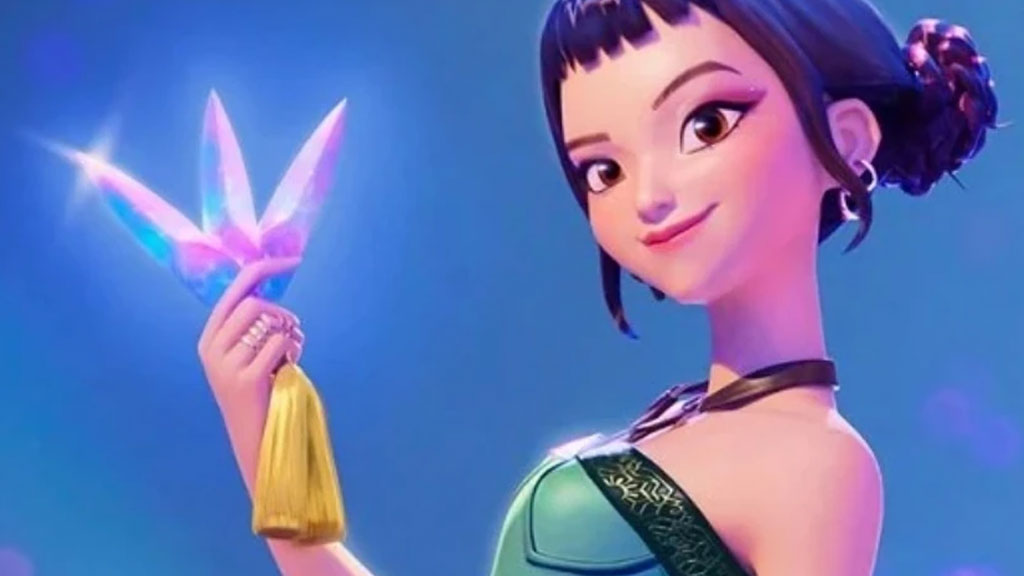
Some sources also refer to her blades as daesinkal, a likely fictional amplification of sinkal into grander form. But the essence remains: these are tools of purification, not destruction. And you can see it in how Zoey fights as well—fast, sharp, and almost rhythmic. Her combat scenes resemble ritual dances more than street fights.
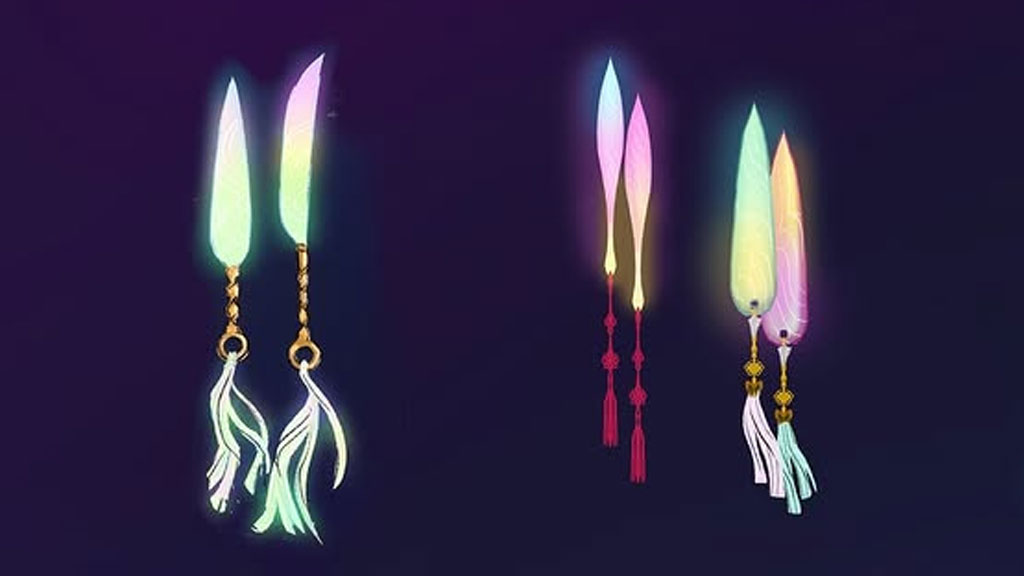
Notice the color and detailing? Neon patterns echo bujeok, Korean paper talismans used in real-life shamanic ceremonies. Those aren’t aesthetic filler—they’re spiritual code.
Mira’s Woldo (Moon Blade / 월도): The Dancer’s Weapon of Destiny
Mira’s massive curved weapon—a polearm fans have mistaken for a Chinese guandao—is firmly Korean. Known as a woldo (or gokdo in some sources), it was used by Joseon cavalry soldiers but also held a place in ritual ceremonies, especially in Goguryeo-era spiritual traditions.
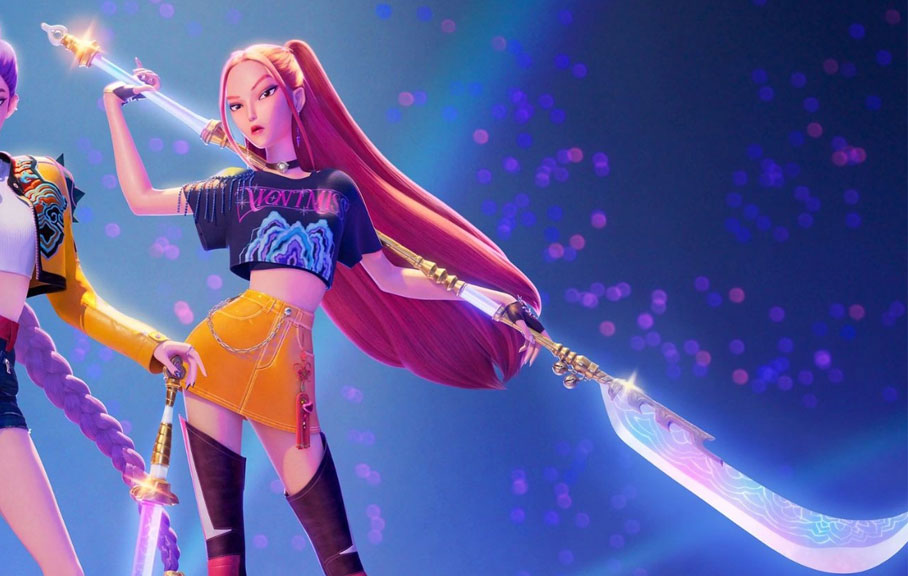
Why the moon blade? The woldo’s crescent shape represents yin energy, ancestral protection, and the ever-shifting nature of identity. In gut rituals, polearms like this were sometimes used in sweeping motions meant to cleanse negative forces.
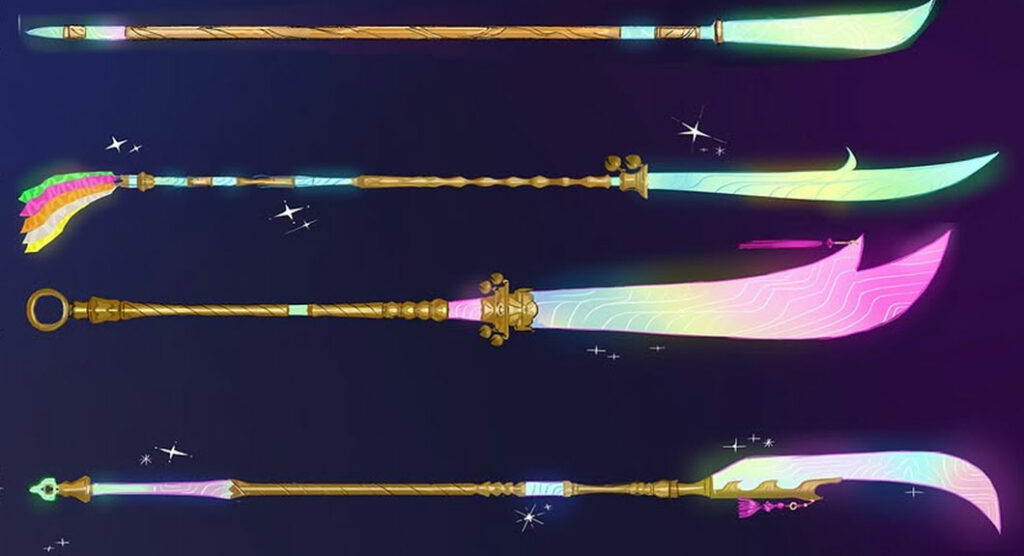
Mira’s choreography pulls straight from that history. Her swings are ritualistic, trance-like, fluid. And when her blade glows, it mirrors the moon in balance with chaos—a nod to Mira’s emotional arc, where she embraces her found family while carrying trauma from the past.
Norigae & Weapon Charms: The Hidden Talismans You Missed
Each member of HUNTRIX wears a norigae, a traditional Korean ornament usually attached to hanbok for luck and protection. But in “KPop Demon Hunters”, they’re more than accessories. They’re power amplifiers—imbued with spiritual symbolism.
Rumi’s norigae reflects her internal harmony. Mira’s features motifs of Rumi and Zoey, symbolizing emotional bonds. Even Celine’s norigae stays true to tradition—highlighting generational contrast between the OG hunters and the new idol-warriors.

They’re talismans. They’re memory. And for many Korean fans, they’re the ultimate emotional detail.
And it’s amazing how a non-Korean Netflix animation can represent such stunning details on Korean cultural heritage. This is the true evidence of how far Korean culture has powerfully impacted the global animation industry.
Will Netflix Release These HUNTRIX Weapons as Official Merch?
Here’s where fandom meets product strategy—and the timing couldn’t be more perfect. After “KPop Demon Hunters” exploded across Netflix, global fans aren’t just talking about the animation or soundtrack. They’re also eyeing the weapons. They want them so, SO badly.
“Please give us the saingeom! I need it on my wall.”
“Let me cosplay Zoey with real sinkal replicas.”
“Mira’s moon blade is merch gold.”
And that’s not just fan chatter—it has now become market demand.
Over the years, Netflix has already proven its appetite for immersive IP-based merchandise, as seen in the “Squid Game” merch collab. And so, the merch ecosystem is expanding—not just with hoodies and posters, but with culturally meaningful, design-rich collectibles. That is why “KPop Demon Hunters” is uniquely positioned to take it even further.
Hence, here’s how these HUNTRIX weapons will make the perfect merch collection for Netflix.
1. Miniature Replicas (Display Collectibles)
Let’s first begin with a miniature replica. Imagine a finely detailed, display-sized saingeom—complete with glowing dancheong patterns, constellation engravings, and tiger motif guard. A scaled-down woldo or dual sinkal set in acrylic casing wouldn’t just be a fandom trophy. It’d be a cultural artifact. Think anime-grade model weapons, but rooted in real Korean heritage.
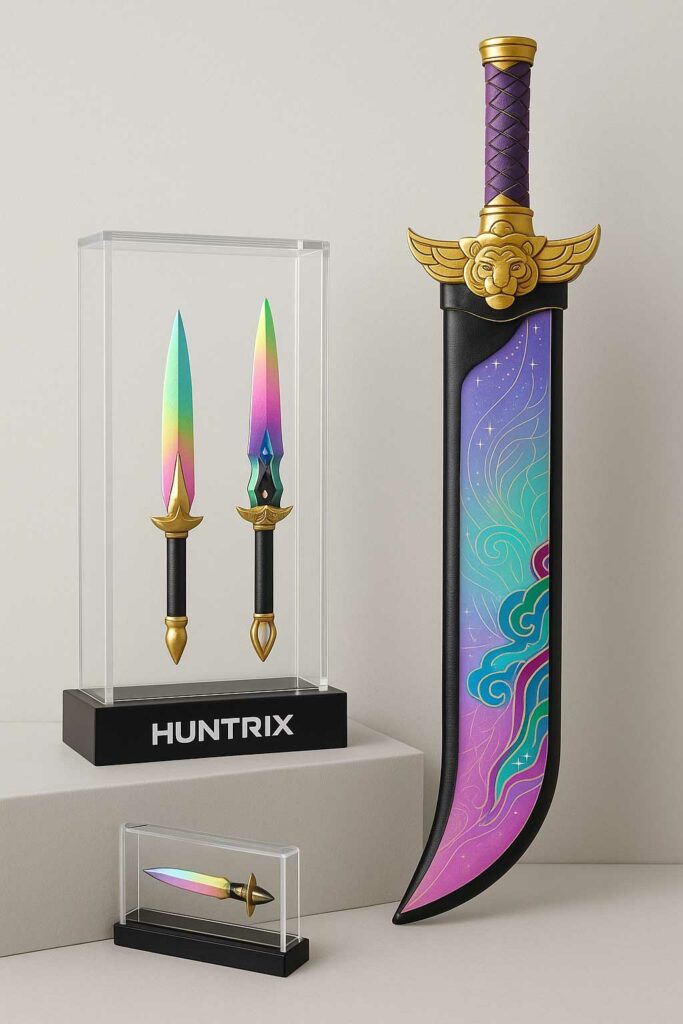
These aren’t just for shelves—they’re for storytelling. A tangible way to honor the lore.
2. Official Cosplay Accessories
Secondly, high-grade prop versions of the weapons—lightweight, con-safe, and detailed—would hit instantly with cosplayers.
The demand is already visible across social media, where fans are DIY-ing foam versions of Zoey’s throwing knives and Rumi’s saingeom. Official props, approved by the creators, could raise the bar—offering authenticity and safety.
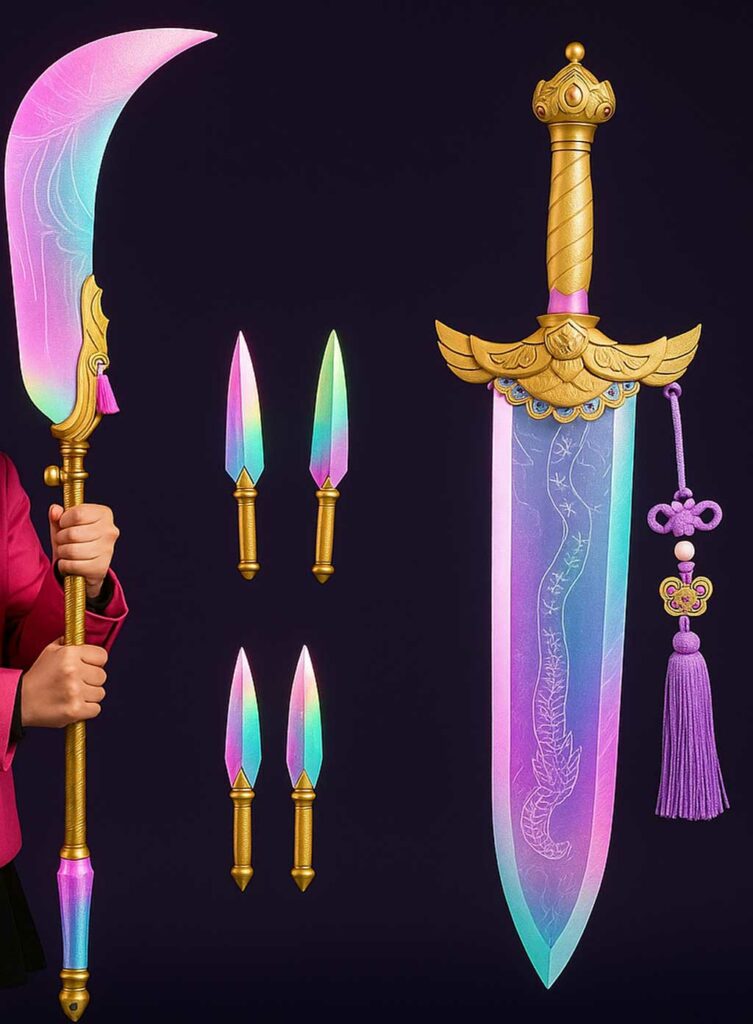
Pair them with character-specific norigae replicas, then play “How It’s Done” from “KPop Demon Hunters” album, and you’ve got the ultimate HUNTRIX look, down to the last tassel.
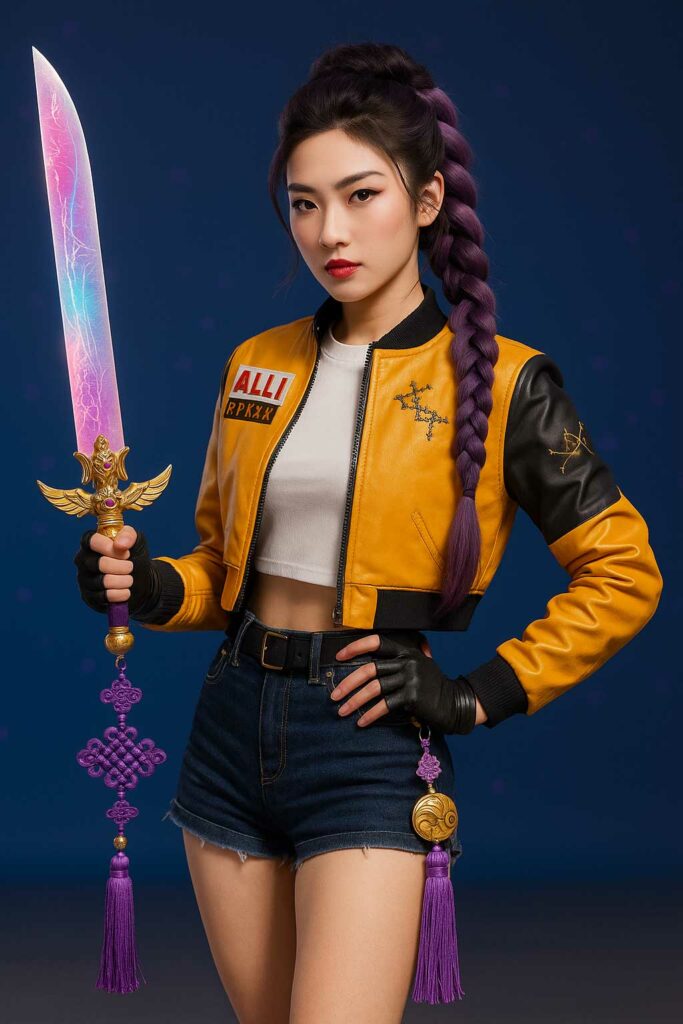
3. Norigae-Inspired Keychains or Jewelry
Meanwhile, for everyday fans who want subtle merch without going full cosplay, a norigae line turned into keychains, charms, or pendants would resonate. Inspired by traditional Korean pendants, they could reflect each member’s identity—Rumi’s constellation symbol, Mira’s family motif, Zoey’s bujeok pattern—reinterpreted in enamel or textile form.
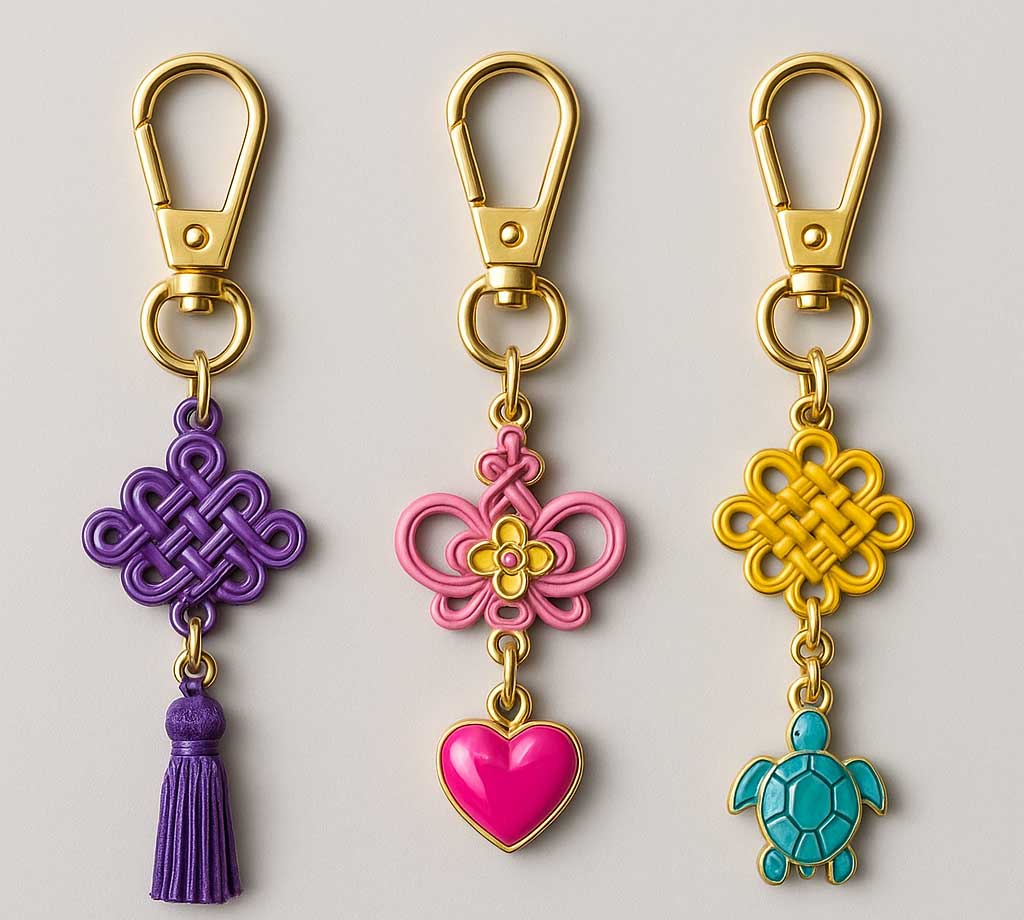
You can wear it as a bag charm. And you can also pin it to a lanyard or keep it on your phone. It’s quiet merch that still speaks volumes.
4. In-Game Weapon Skins or AR Extensions
This may seem future-forward but considering Netflix’s recent push into gaming and interactive content, imagine these iconic weapons appearing in Korean-made games that already explore the blend of contemporary fantasy and traditional culture.
Imagine—just join us and really imagine a breathtaking collab between “KPop Demon Hunters” with some of these stunning Korean games featuring the whole set of HUNTRIX skins and weapons.
Black Desert (Pearl Abyss)
Known for its stunning visuals and class-based combat, Black Desert has the flexibility to incorporate limited-time HUNTRIX weapon skins. Rumi’s saingeom would feel right at home among its mystical blade-wielders, while Zoey’s twin sinkal could adapt into a rogue-style class skin. The game’s character customization also opens doors for official HUNTRIX-themed outfits or accessories.
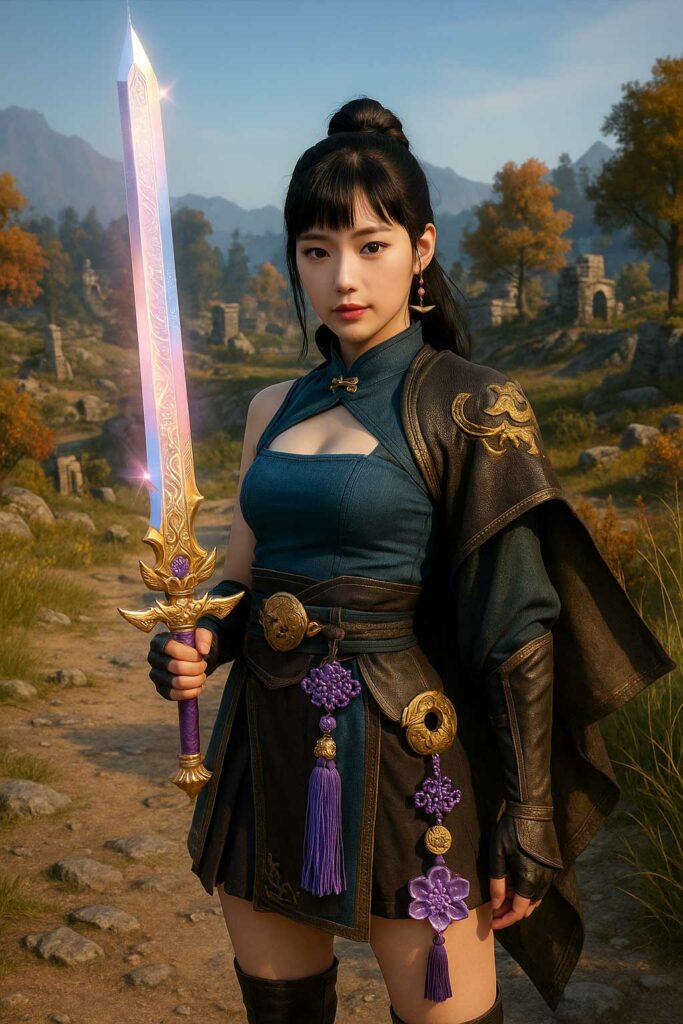
Kingdom: The Blood (ACTION SQUARE)
Built on the Joseon-zombie lore of the Kingdom series, this ARPG already lives in a stylized Joseon-meets-horror setting—exactly where HUNTRIX’s magical weapons would shine. A crossover could let fans slash through undead with Mira’s glowing woldo, or perform a mini-gut ritual with saingeom finishers. It would be lore-consistent and visually stunning.
ArcheAge War (XL Games)
This fantasy MMO already features weapon and magic systems inspired by East Asian tradition. A HUNTRIX weapon pack here would introduce Korean myth-inspired gear into PvP raids or boss battles, giving cultural depth to gameplay mechanics.
Blade & Soul (NCSoft)
Lastly, with its wuxia-inspired aesthetic and spiritual undertones, Sony can just host a dedicated HUNTRIX event with NCSoft “Blade & Soul “. This even will then let players unlock norigae charms as accessories, or equipping traditional-style weapons that channel spiritual energy much like in the film. Can you imagine how stunning they will be?
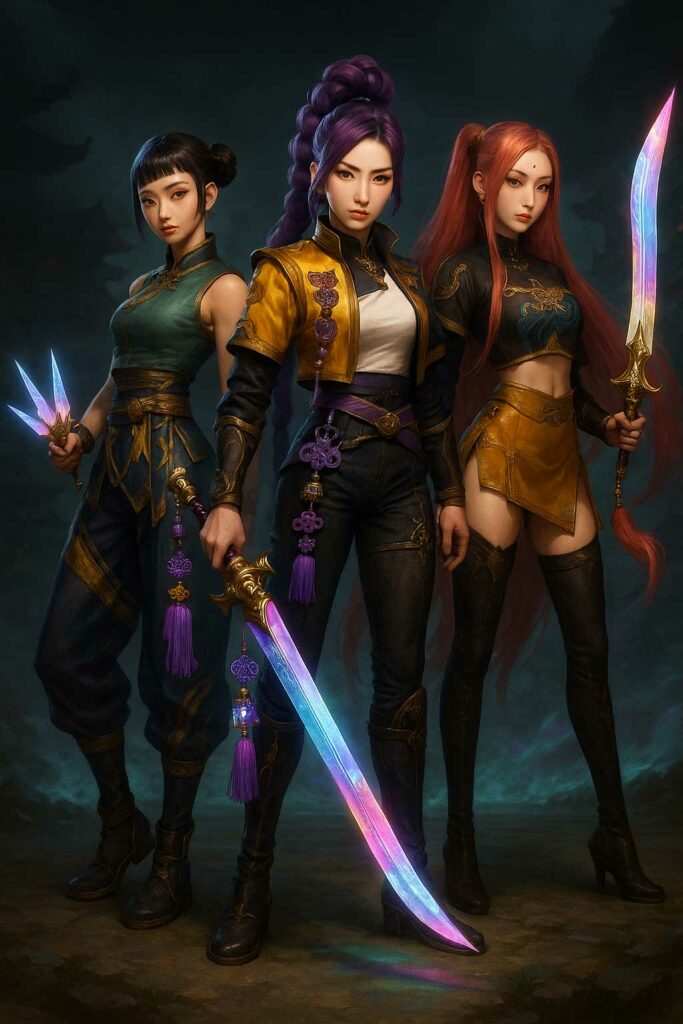
These possible collaborations could give fans a playable version of the HUNTRIX arsenal. Even an AR lens filter that lets fans “summon” their saingeom or perform a gut-inspired move could explode on TikTok.
It bridges the physical with the digital—and keeps the hype alive between sequels.
What Makes These Potential HUNTRIX Weapons Merch Drops Special?
Finally, unlike standard action-adventure IPs, “KPop Demon Hunters” isn’t working with generic swords or made-up magic systems. These weapons carry real historical and ceremonial weight. Hence, that means every product has the potential to educate, empower, and spark curiosity about Korean heritage.
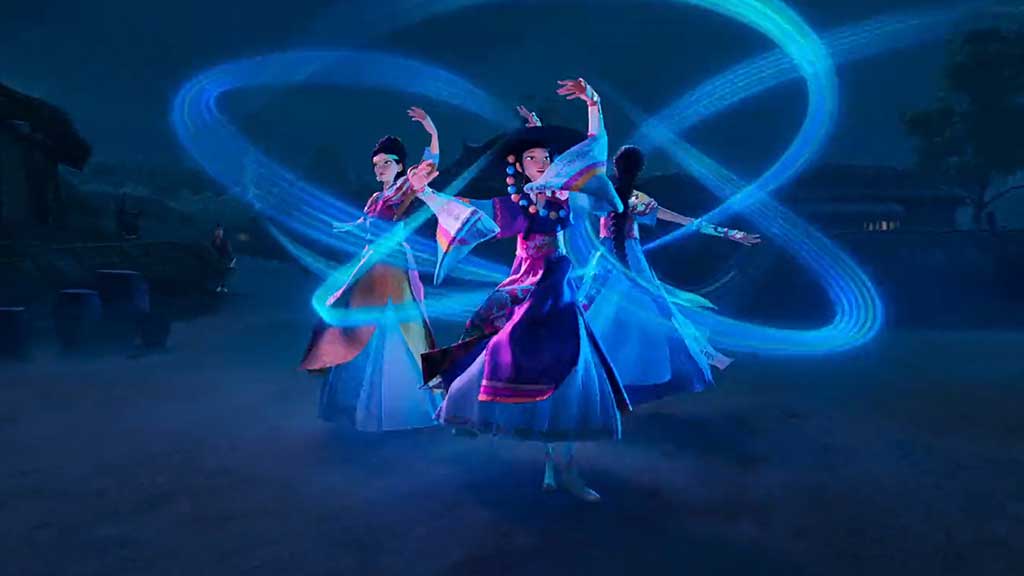
Therefore, the perfect merch of these HUNTRIX weapons will become a conversation starter about shamanic rituals, the role of the saingeom, or the history of the woldo in Goguryeo-era Korea. That’s the kind of merchandise fans don’t just wish to own but also treasure for a lifetime.
So if you’re still thinking those blades were just for style, please look again. And really look. Every slash, throw, and swing carries centuries of intent. Therefore, the next time Netflix Shop updates its “KPop Demon Hunters” merch catalog, prepare yourself for the possibility that Rumi’s saingeom glows back at you from the shelves with the other HUNTRIX weapons.
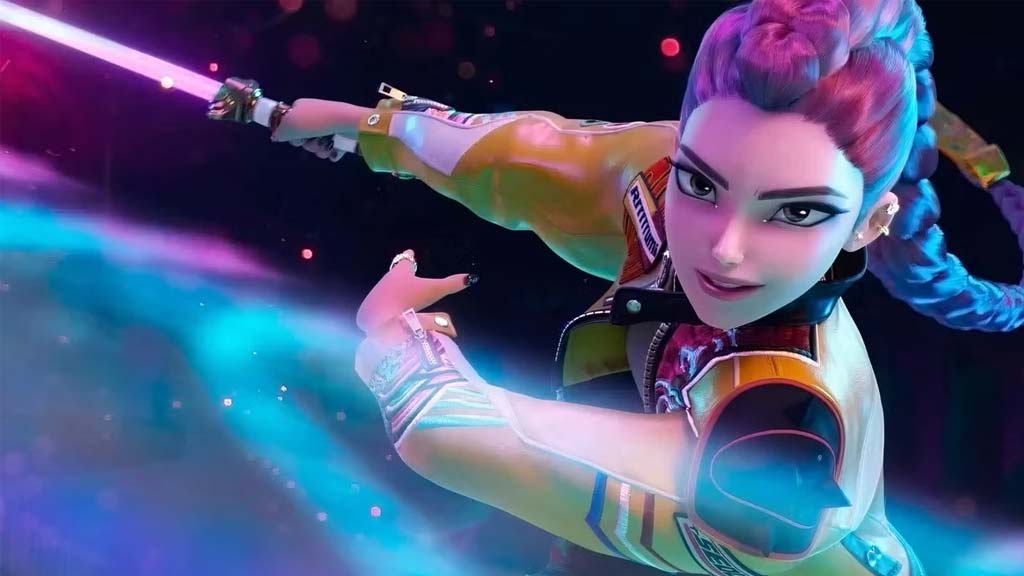
Because when storytelling fuses with tradition this authentically? It doesn’t stay on screen, but also becomes something you can hold.
And maybe… they become something that protects you too.
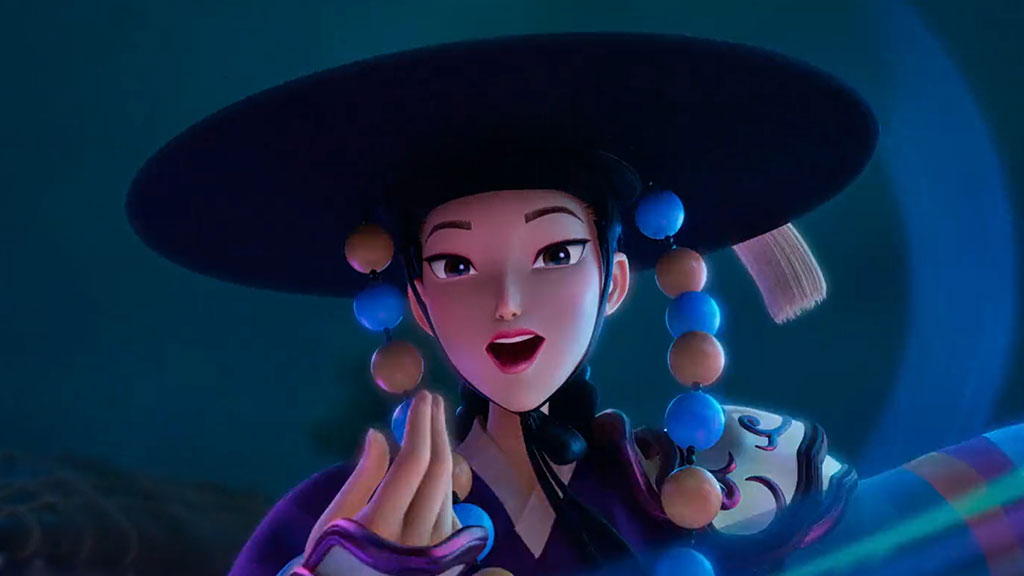
If you’re looking to promote your products and connect with international buyers, please don’t hesitate to contact us.
Join us on an exciting journey to explore the vibrant world of Korean lifestyle – from the latest beauty tips to the hottest tech and so much more on Facebook, Twitter, LinkedIn, and Flipboard.



